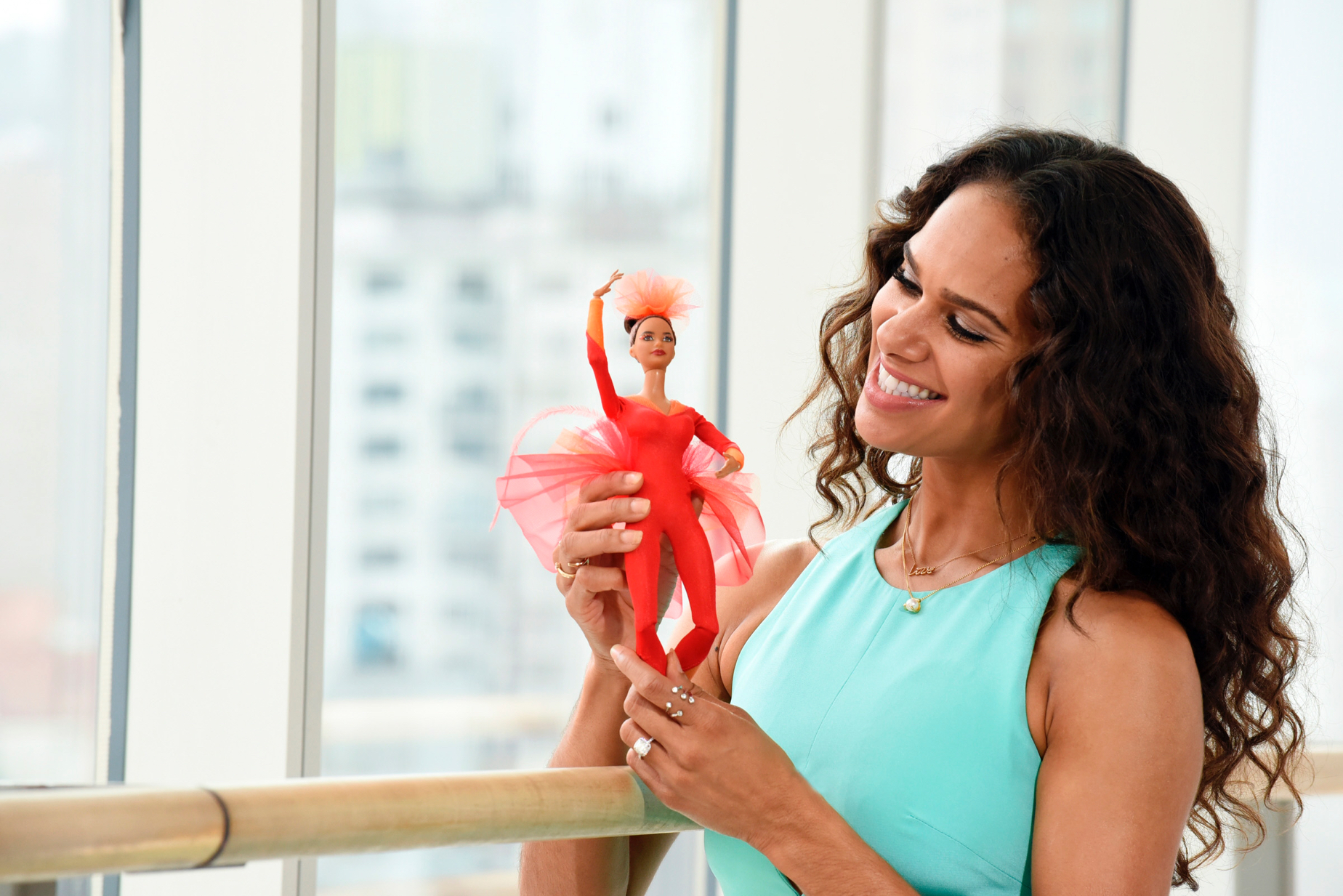
Growing up, I had two big interests—and they both started with the letter B: Barbie and ballet. My mom enrolled me in a local ballet company as a little girl, and I loved the music and the movement of ballet. But I couldn’t help but notice at practices and recitals that little girls that looked like me were few and far between. While I felt resplendent in my pink leotards, ballet slippers and “flesh-toned” tights, those tights were never quite the color of my own little legs, nor did they reflect the variety of hues that were found in the skin tones of the women in my family. But that didn’t deter me from dancing my heart out at each and every recital.
Although I loved ballet as a little girl, it would have felt good to know of other dancers who looked more like me. Had I known earlier in my dance “career” that there were other ballerinas that reflected the image I saw in my mirror, I might have pursued it longer than I did. I later realized that there were black professional ballerinas because I saw an episode of The Cosby Show in which the Alvin Ailey American Dance Theater performed. Imagine my surprise when I saw that there was a dance troupe full of brown girls like me.
Luckily, today’s little girls are able to see themselves reflected in the world of both ballet and now Barbie, thanks to the launch of the Misty Copeland Barbie doll. Through the Copeland doll, we have an image of a ballerina that looks like a segment of the population that we don’t see in many major ballet companies. The Misty Copeland Barbie doll is part of Barbie’s “Sheroes” program, which spotlights and honors female heroes who break boundaries, as Copeland did when she became the first black female principal dancer at the American Ballet Theater.
In a video shared by Barbie’s official Facebook page on Monday, Copeland discusses how the doll inspired her as a child. “I was a very shy girl,” she says, “so I felt this instant connection with Barbie. She was a way for me to dream. She was extremely feminine, and I think what every little girl wants to be—because Barbie can transform into anything.”
Read more: How Sanya Richards-Ross is Preparing for Her Last Olympics
Some people, however, may not think to aspire to certain goals if they don’t have role models who’ve paved the way for them. I am a believer in the idea that we all need windows and mirrors in order to reach our fullest potential.
Windows and mirrors is a phrase coined by Emily Style as part of the National Seeking Educational Equity and Diversity (SEED) Project. Mirrors are stories or images that reflect your culture and reality and help you understand yourself, while windows offer you a view into someone else’s experience. When your world is solely filled with mirrors, your worldview lacks diversity. And when you only have windows into others’ experiences, you can feel as if you don’t belong. The new Misty Copeland Barbie doll is both a mirror to other brown girls to show that they can achieve their dreams and a window for other little girls to see that ballet isn’t just for one type of girl.
I think it’s very important for a young person to not set limits on what their dreams are,” Copeland says in the Barbie video. “If they have something in their mind and they feel strong about it, give it your all.” Thanks to the Misty Copeland Barbie doll, girls of all races can dream bigger than ever because they now live in a world where brown girls, ballet and Barbie can be one and the same.
Kenesha Williams is the founder and editor-in-chief of Black Girl Magic Lit Mag, a speculative fiction literary magazine featuring black female main characters.
More Must-Reads From TIME
- The 100 Most Influential People of 2024
- The Revolution of Yulia Navalnaya
- 6 Compliments That Land Every Time
- What's the Deal With the Bitcoin Halving?
- If You're Dating Right Now , You're Brave: Column
- The AI That Could Heal a Divided Internet
- Fallout Is a Brilliant Model for the Future of Video Game Adaptations
- Want Weekly Recs on What to Watch, Read, and More? Sign Up for Worth Your Time
Contact us at letters@time.com